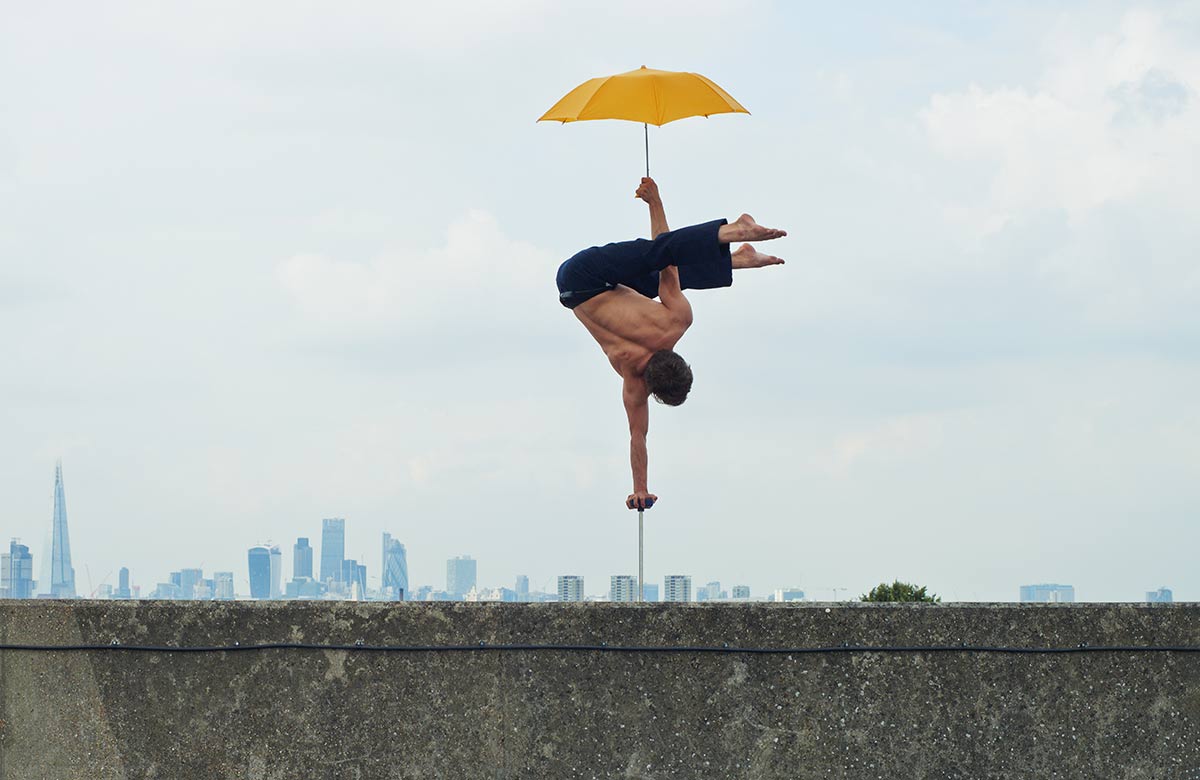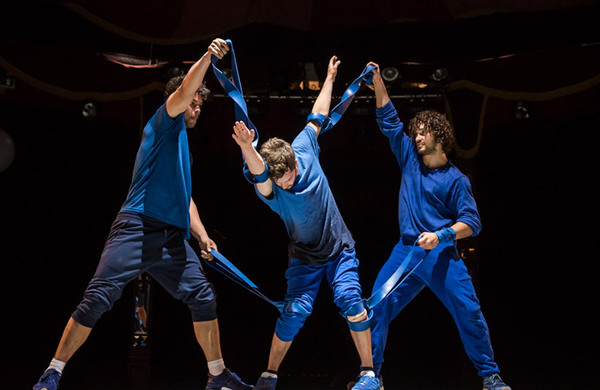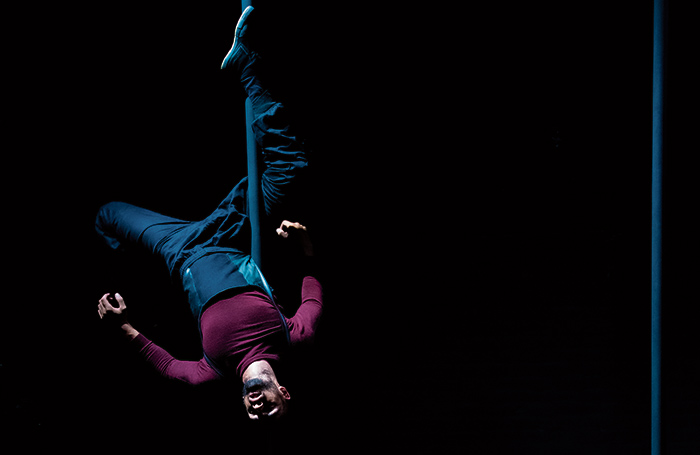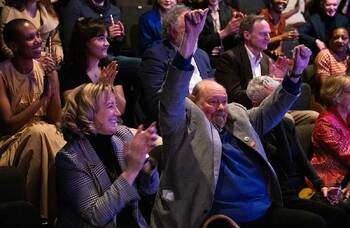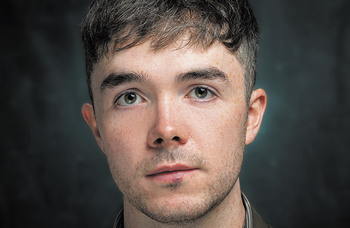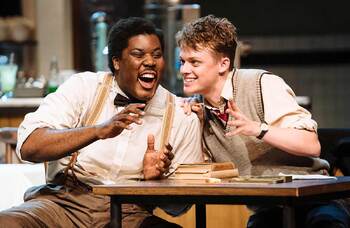Circus theatre is facing an existential threat – but more support will benefit the wider industry
My life changed when I saw Shift by Barely Methodical Troupe with a friend. I was compelled to hold him. Over his shoulder, I saw middle-aged men putting arms around one another and small children doing cartwheels. I held my friend (who I was falling for), and couldn’t help myself. I blurted: “I love you.” We laughed in the sun around others forming embodied connections. All because of this show.
I knew then that I wanted to make circus theatre to give other people those same moments of unbridled, embodied connection. As soon as I started making this work, I discovered that there is an audience for it. But this new frontier for interdisciplinary theatre is under existential threat before it’s even taken root.
What is ‘circus theatre’? It’s a blend of circus practice and acrobatics with narrative, character and theatrical dramaturgy. Imagine a musical, but instead of song and dance, you have circus arts.
There is a tangible audience for circus that would spark envy from theatres: a broad spread of ages, gender expression and class, geographically local to the visiting circus, in their thousands. During one and a half years in a previous role for contemporary circus company Revel Puck Circus, we sold more than 50,000 tickets. This is an audience theatres need, and circus theatre shows can help reach them.
Circus theatre works are already proving their worth. Tess by Ockham’s Razor was named in the Guardian’s best shows of 2024. Other companies at the forefront of the art form include Upswing and NoFit State, while circus artist Sadiq Ali won Summerhall’s coveted Lustrum Award in 2022 for The Chosen Haram. But, bar Ali, all these companies have been around for a long time.
So why is this art form under threat just as it is emerging?
The artists need to be highly skilled in both their circus discipline and acting – leaving a small pool of those with the relevant skills.
Circus requires a huge quantity of resources: artists need big spaces, people to spot them, crash mats, tall ceilings for aerial equipment and conditioning time.
All of that is on offer at one of Europe’s leading circus schools here in the UK, the National Centre for Circus Arts, but the school’s survival is not guaranteed, as it recently lost its national portfolio organisation funding.
Outside of the NCCA, Circomedia in Bristol, and the few companies doing it themselves, there is little other formal training and development support.
Imagine there being only two Drama Schools in the UK and one recently lost its core funding. You’d be shouting: “This is terrible, we won’t have enough trained actors for an entire generation!” That’s where the circus industry is.
Then once you’ve found the artists highly skilled in both their circus discipline and acting, it’s a battle to retain them. They are forced to choose between a project in the UK with deep artistic value and resonance, or take a £30,000 cruise contract, or that £5,000 job in Dubai for two days. It’s hard for them not to follow the money.
Enter the ‘I’m really sorry but…’ email two days before rehearsals start, then recasting a show in the UK where the artists with the unique blend of skills you need can be counted on one hand.
Continues...
So we are training fewer artists, at a few institutions, only for them to disappear into commercial jobs abroad, or more established international contemporary circuses.
Much like how theatre relies on its fringe scene to explore and expand its practices, circus theatre needs this too. But given the nature of circus, you cannot perform this work in a pub theatre.
I don’t need to reiterate the pervasive lack of funding within all the creative industries. However, the mass appeal of circus and the opportunity to rake in ticket sales to theatres with its powerful allure, seems to suggest there’s a way out of this, just so long as we can actually make the work people want to see.
Much like how theatre relies on its fringe scene to explore and expand its practices, circus theatre needs this too
Why do people want to see it? Because backflips are cool. When we see someone do something that is beyond our capability it astounds us. Virtuosity and risk are incredible to watch. The ‘wow factor’ is a valuable experience. If you see an incredible feat on a poster, you’re more likely to go.
That brings us to the more nuanced and powerful artistic offer of the form. There’s a phrase for it: kinaesthetic empathy. This is our ability to experience empathy by observing another’s body movements. Circus offers the potential to take body movement to an extreme. As artists, we can curate this to tell a story and make audiences feel it.
If you see someone being thrown and caught, you feel the risk and the trust they experience. Your body reacts, pushing you to the edge of your seat and raising your heartbeat. You’re not just feeling for that person, but with them. How powerful is that as a tool for creating connection and compassion?
Engaging nervous systems through circus opens people up, and we see more catharsis, tears of grief and love, hands held and embraces. This form is revitalising, and has the potential to do that elusive thing: develop new audiences for theatre and secure ticket sales.
Continues...
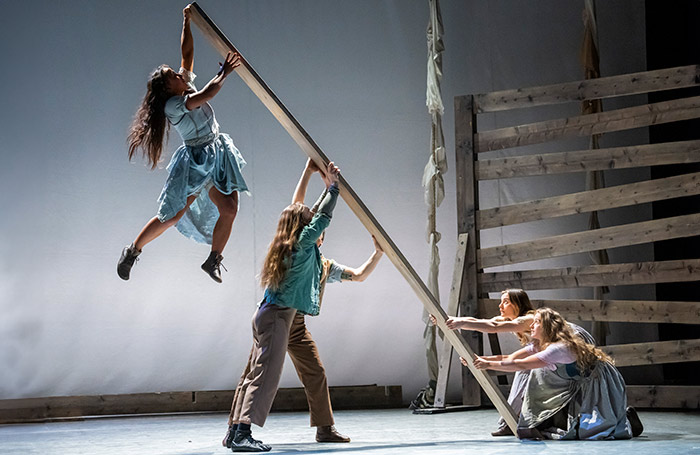
So what can the wider industry do?
Theatres: invest in making your spaces suitable for circus. That could look like installing even just one rigging point: its exhausting having the same “no rigging point” blockage to booking.
Producers: offer long and funded residencies to develop this work in your spaces. See the commercial prospect of circus and the intellectual rigour of its artistry.
Educational institutions: include rigging training for stage managers and technicians, include circus works in your curriculum and partner with circus organisations.
That’s what I’m trying to change with my company Hours, which continues to introduce theatre audiences to the delights of circus and push the boundaries of circus with theatre training for artists. It’s about recognising the outsized potential the tiny circus theatre community has to offer the wider cultural landscape in the UK.
There’s one last demographic that I think this work must be for: teenage boys. We know not a lot of them come to the theatre. Imagine if we could harness fitness bros into the circus sphere; encourage the parkour community to come to theatres; and share stories of connection and compassion with an audience of teenage boys. How radical would that be? And all you have to do is promise just one backflip.
Opinion
Recommended for you
Advice
Recommended for you
Most Read
Across The Stage this weekYour subscription helps ensure our journalism can continue
Invest in The Stage today with a subscription starting at just £7.99
 Daisy Minto
Daisy Minto
